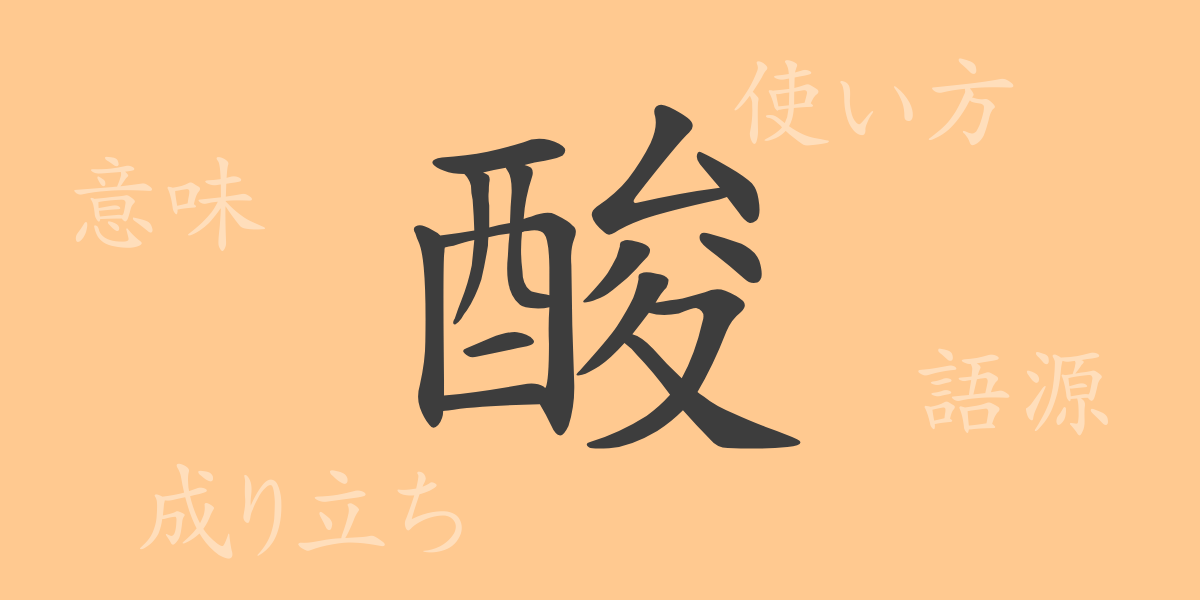The kanji “酸(さん)” is used casually in our daily lives, encompassing meanings from food to chemical reactions. However, its origins, specific meanings, and the deep cultural background embedded in idioms and phrases are not widely known. This article delves into the world of the common kanji “酸(さん),” exploring its origins, meanings, usage, and the cultural richness it holds.
Origin of 酸(さん)
The character “酸(さん)” originated in ancient China to describe the sour taste that arises when alcohol ferments. The kanji combines “酉(ひよみのとり)” which represents a container for alcohol, and “夋,” an early symbol for fermentation, evoking the sourness of fermented liquor. Over time, “酸(さん)” evolved to refer not only to taste but also to substances with chemical properties.
Meaning and Usage of 酸(さん)
“酸(さん)” in chemistry refers to substances that readily release hydrogen ions, characterizing acidity. In everyday language, it describes a sour taste and can also metaphorically denote something caustic or sharp. In cooking, acidity is often used to enhance flavors, and terms like “酸味(さんみ)” (sourness) and “酸っぱい(すっぱい)” (sour) are commonly used.
Reading, Stroke Count, and Radical of 酸(さん)
How is the kanji “酸(さん)” read and composed in Japanese?
- Reading: The on’yomi (音読み) reading is “サン(さん)” and the kun’yomi (訓読み) reading is “す・い” (su・i).
- Stroke count: The kanji “酸(さん)” has a total of 14 strokes.
- Radical: The radical of this kanji is “酉(ひよみのとり)” (hiyomi no tori).
Idioms, Phrases, and Proverbs Using 酸(さん) and Their Meanings
There are many idioms, phrases, and proverbs that include “酸(さん),” each with unique meanings and backgrounds. For example, “酸素(さんそ)” (oxygen) is an essential element for life, “酸味(さんみ)” (sourness) refers to one of the basic tastes, and the idiom “酸っぱい顔をする(すっぱいかおをする)” (suppai kao o suru) describes a person’s expression when faced with an unpleasant situation. These expressions illustrate the richness of the Japanese language.
Conclusion on 酸(さん)
The kanji “酸(さん)” explored in this article carries a wealth of meanings beyond its surface, playing a significant role in the Japanese language. From culinary arts to scientific fields and metaphorical expressions, this character deeply influences various aspects of our lives. Next time you encounter “酸(さん),” consider the rich history and culture behind it, adding another layer of appreciation for this versatile kanji.

























